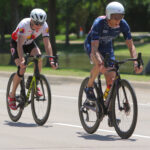The next three issues of Prime Sport Alert! will be devoted to intensity, which may be the most important contributor to athletic performance once the competition begins. It?s so important because all of the motivation, confidence, focus, and emotions in the world won?t help you if your body is not physiologically capable of doing what it needs to do for you to perform your best.
Simply put, intensity is the amount of physiological activity you experience in your body including heart rate, respiration, and adrenaline. Intensity is a continuum that ranges from sleep (very relaxed) to terror (very anxious). Somewhere in between those two extremes is the level of intensity at which you perform your best.
The challenge with intensity is that there is not one ideal intensity for all athletes. Depending on your physical and psychological make-up, you may perform best very relaxed, moderately intense, or bouncing off the walls with intensity.
The sport you compete in also impacts intensity. Sports that have different physiological demands will have different intensity requirements. For example, sports that involve quick and powerful bursts of energy, such as weight lifting or sprinting, need higher intensity. In contrast, sports that involve fine motor-skills or endurance, for instance, golf or marathon running, respectively, require much lower intensity.
Intensity is made up of two components. First, there is the physical experience of intensity, that is, what you actually feel in your body when you are competing. Are you calm or filled with energy?? Are you relaxed or tense?? Second, there is your perception of the intensity. In other words, do you perceive the intensity positively or negatively?? Two athletes can feel the exact same thing physiologically, but interpret those physical feelings in very different ways. One may view the intensity as excitement and it will help his performance. Another may see the intensity as anxiety and it will hurt his performance.
The physical experience and the perception of intensity are affected by several mental factors. If you are not confident, feeling frustrated and angry, and focusing on winning rather than on performing your best, you will see the intensity as negative. In contrast, if you are confident and positive, happy and excited, and focused on performing well, the intensity will be perceived as positive.
Signs of Over- and Under-intensity
Intensity produces a wide variety of physical and mental symptoms that can help you recognize when your intensity is too high or too low. By being aware of these signs, you will be able to know when you?re not performing at prime intensity and can take steps to reach that ideal level.
Overintensity. Muscle tension and breathing difficulties are the most common signs of overintensity. Most athletes indicate that when they?re too intense, they feel tension in their shoulders and their legs, which happen to be the two most important physical areas for many sports. If a swimmer?s shoulders are tense, the motion of her strokes will shorten and she won?t be able to swim with ease or power.? When a high jumper?s legs are tense, he loses the ability to run and jump with smoothness and explosiveness.
Many athletes also report that their breathing becomes short and choppy when they get nervous. This restriction in breathing means that they?re not getting enough oxygen into their system so they will tire quickly. I?ve also found that the smoothness of athletes? movement tends to mirror their breathing. If their breathing is long and smooth, so is their movement. If their breathing is abrupt and uneven, their movements are jerky and uncomfortable.
Athletes who are overly intense often exhibit poor posture and a stiff gait. Muscle tension causes their shoulders to rise and their body to seem to close up. Athletes make more mistakes when they?re overly intense because anxiety disrupts coordination. Overintensity interferes with motor control that affects technical skills and movement. Athletes who are anxious also increase the pace of the competition. For example, an overly intense cyclist may go out too fast early in a road race. Athletes often look rushed and frantic. If opponents are taking their time, overly intense athletes become impatient at the slow pace.
Overintensity negatively influences athletes mentally as well. Anxiety lowers confidence and causes doubts in ability. The physical and mental discomfort produces negative emotions such as frustration, anger, and depression. The anxiety, doubts, and negative emotions hurt focus by drawing athletes? attention away from performing their best and onto how badly they feel.
Underintensity. Though not as common, athletes can also experience underintensity during competition. The most common symptoms of underintensity are low energy and lethargy. Athletes lack the adrenaline they need to give their best effort. Though not as discomforting as overintensity, underintensity hurts performance equally because athletes lack the physical requisites such as strength, stamina, and agility to meet the demands of their sport.
Mentally, underintensity undermines motivation. Athletes just don?t feel like being out there. The lack of interest caused by too low intensity also impairs their focus because they?re easily distracted and have difficulty staying focused on their performances.
Line Between Intensity and Tensity
The ultimate goal of prime intensity is to find the precise line between intensity and tensity (yes, that is actually a word). The closer you can get to that line, the more your body will work for you in achieving Prime Sport. If you cross the line to tensity, your body will no longer be physically capable of attained Prime Sport. Great athletes have the ability to do two things related to this line. First, they have a better understanding of where that line is, so they can ?tightrope walk? on it, thereby maximizing what their bodies can give them. Second, they?re able to stay on that line longer than other athletes, which enables them to perform at a consistently higher level for longer periods of time.
Key Competitive Situations
There are common competitive situations in which you can expect that your intensity will shift away from prime intensity. If you can identify these situations when they occur, you can more quickly take steps to prevent a change in intensity that may hurt your performance. These competitive situations usually relate to when you?re either ahead or behind in a competition, or the competition is on the line.
Overintensity is most common in pressure situations such as in the finals of competitions or an overtime period. Anytime you believe that you must win a point or a game, your intensity will probably rise beyond your prime intensity. Underintensity is seen most often in competitive situations where you believe that you have the competition won, for example, you have a big lead or time is running out.
There is not, however, a consistent pattern in how intensity will change for all athletes. Athletes in the same competitive situation can experience different changes in intensity. For example, one athlete may have an increase in intensity and feel very nervous because she?s never defeated her opponent before and doesn?t totally believe that she can. While another athlete in the same situation might have a decrease in intensity and feel a letdown because she?s already mentally in the locker room thinking about her next competition. You have to figure out how you typically react and then use the psych-up and psych-down techniques that I will discuss in a future newsletter to achieve and maintain prime intensity.






